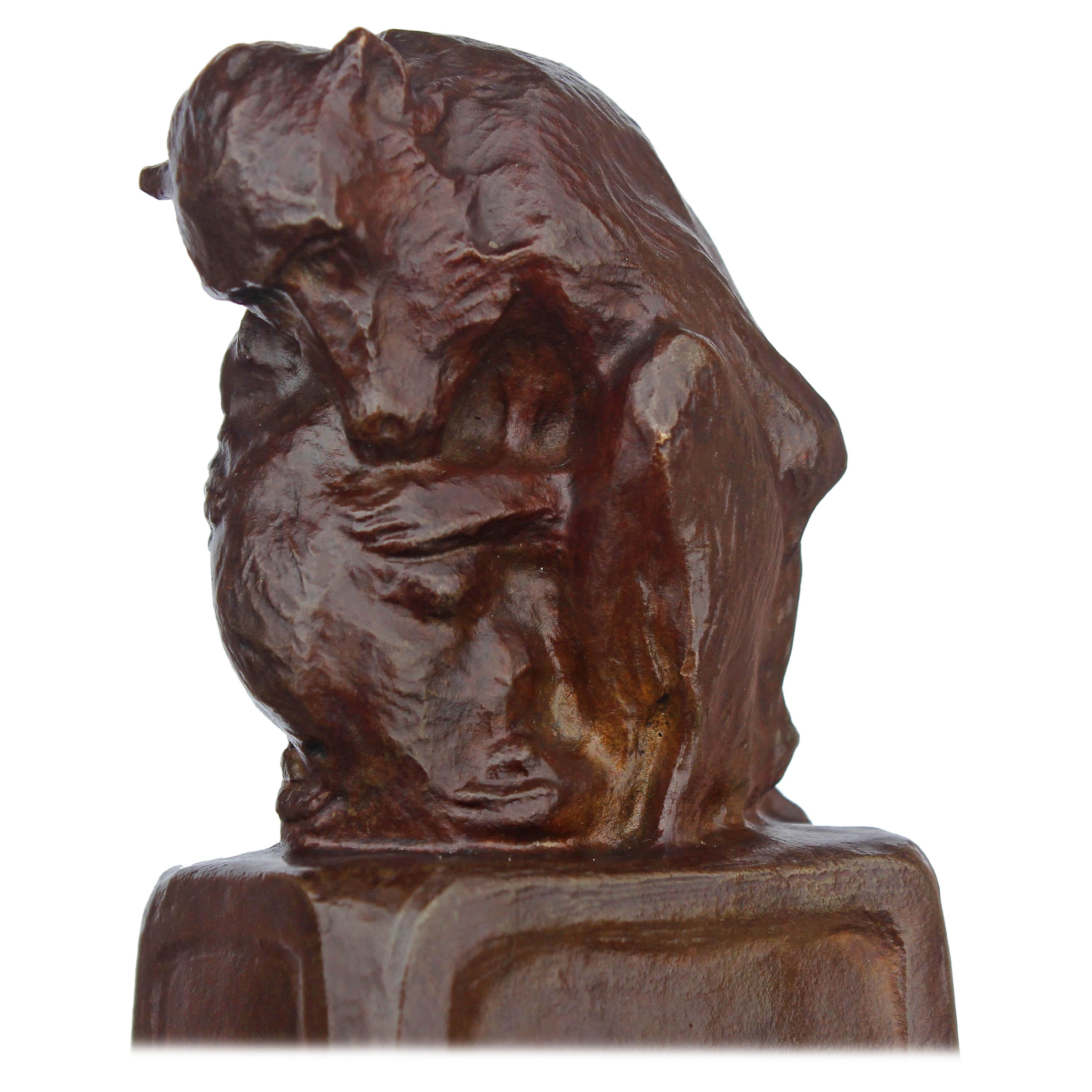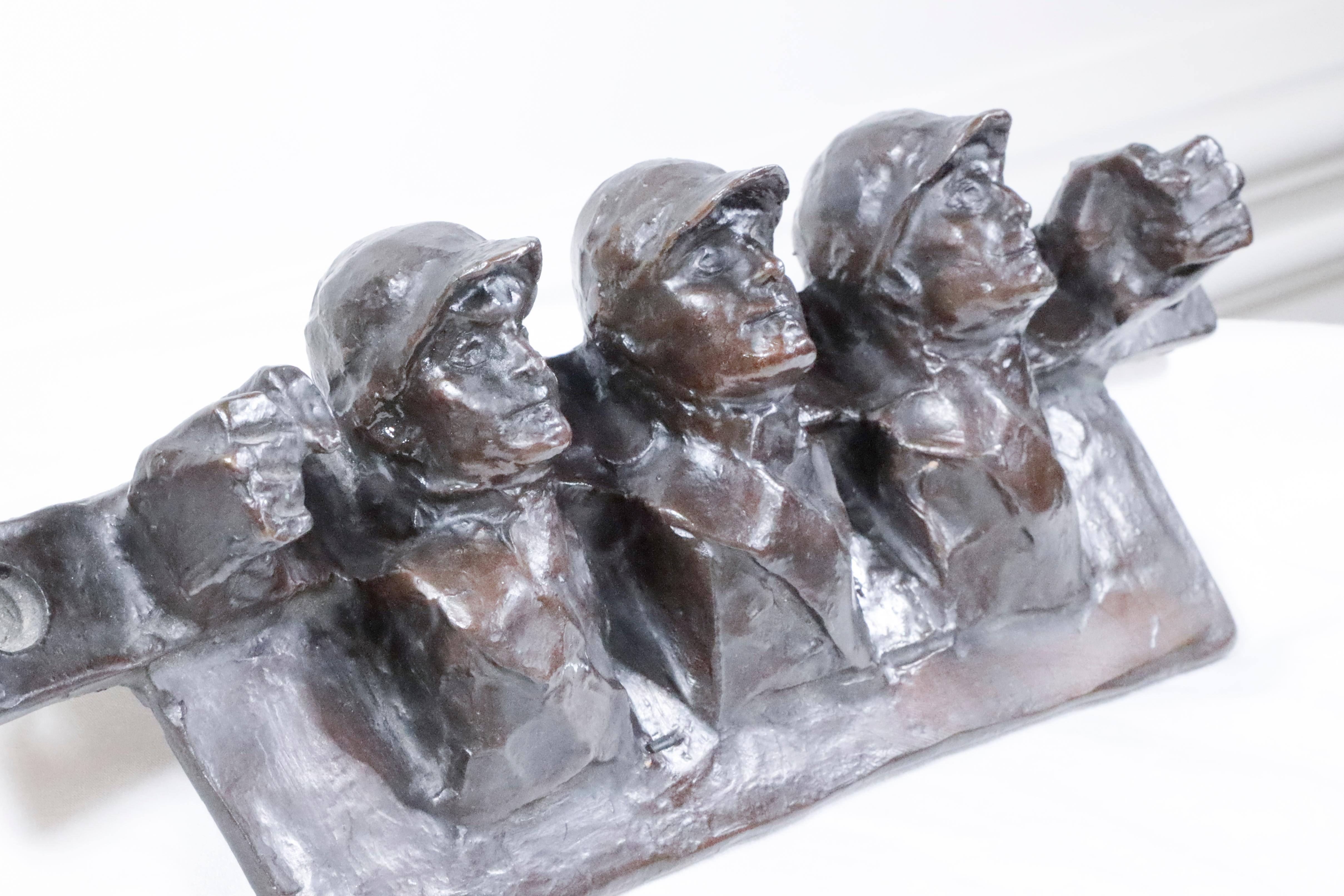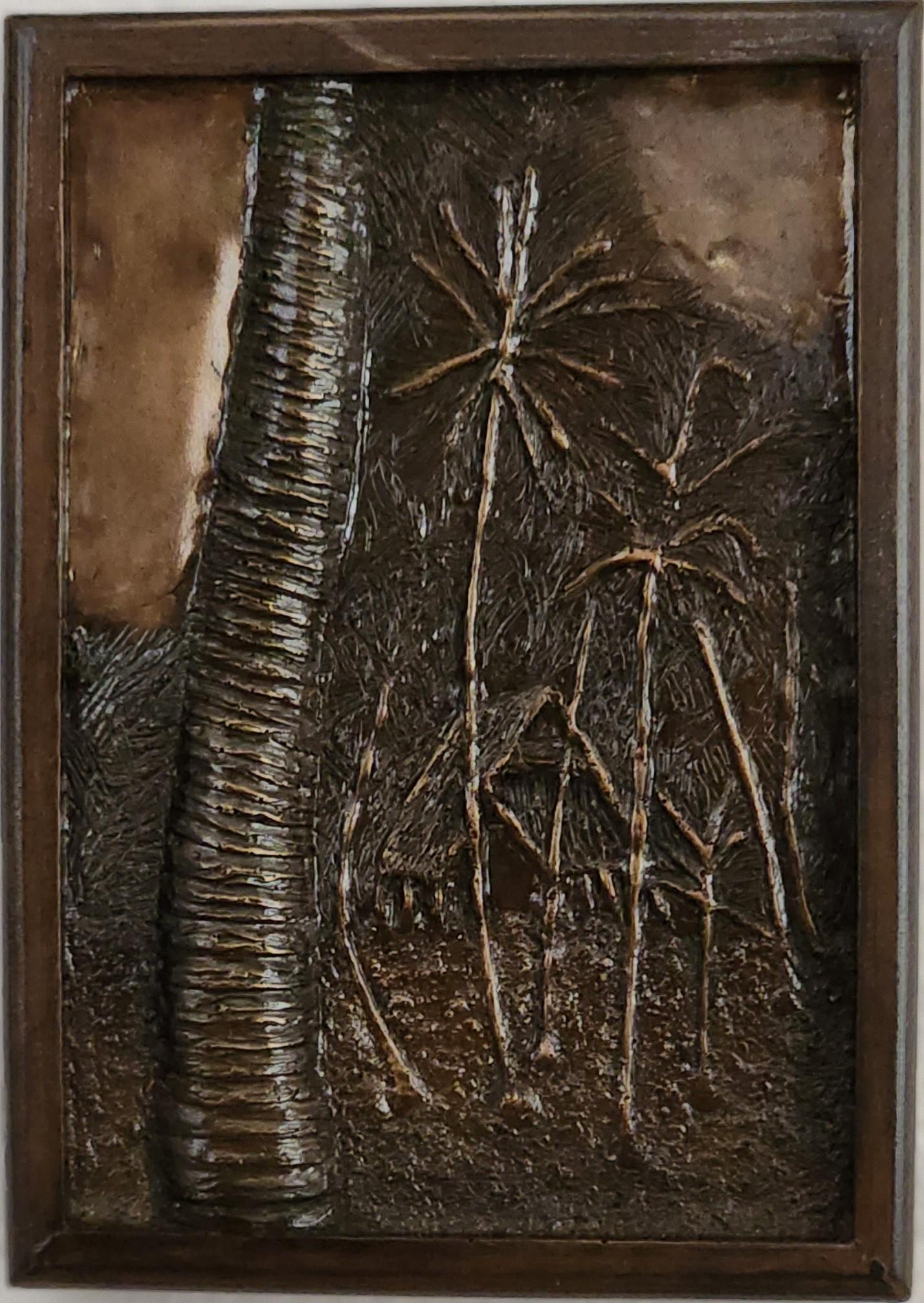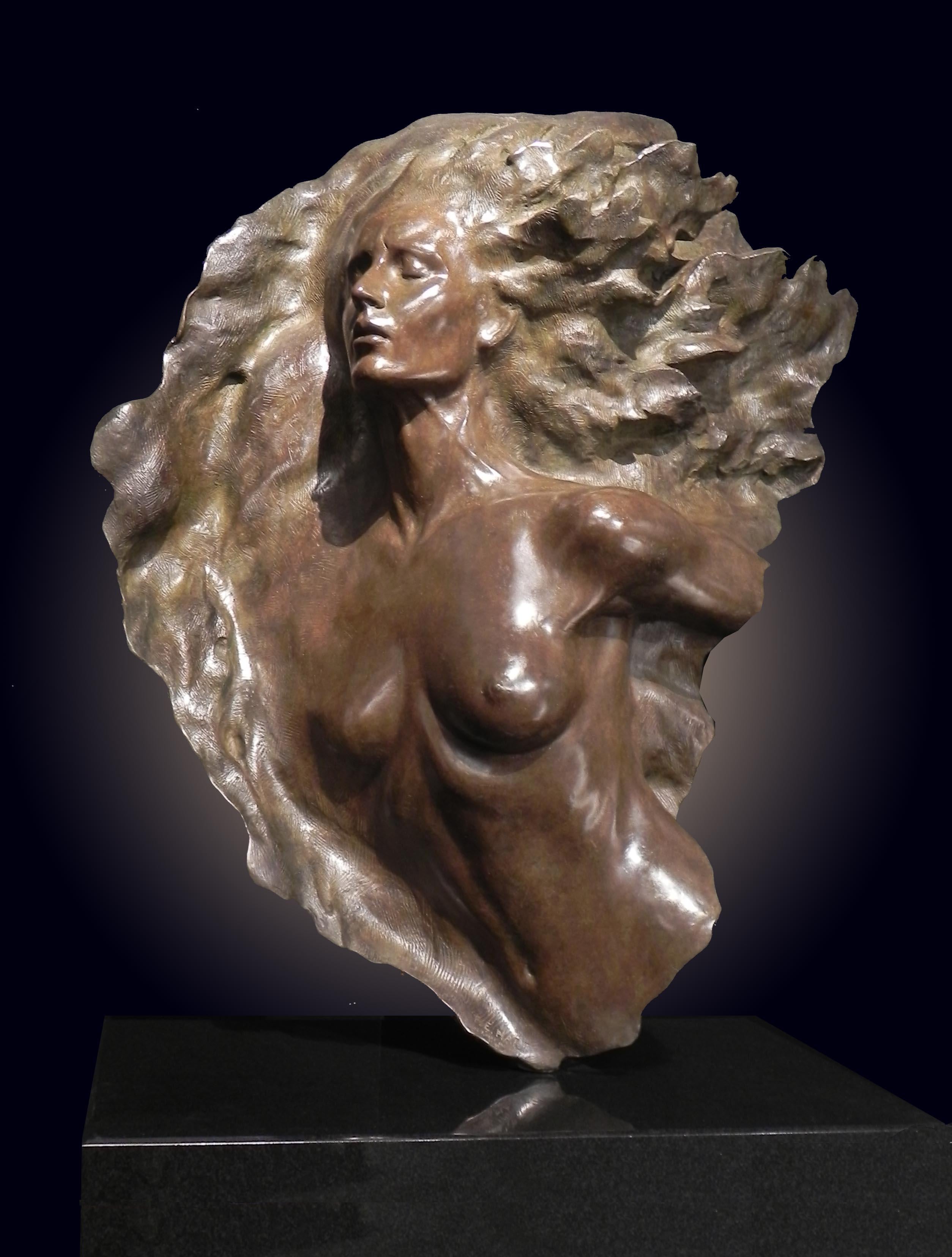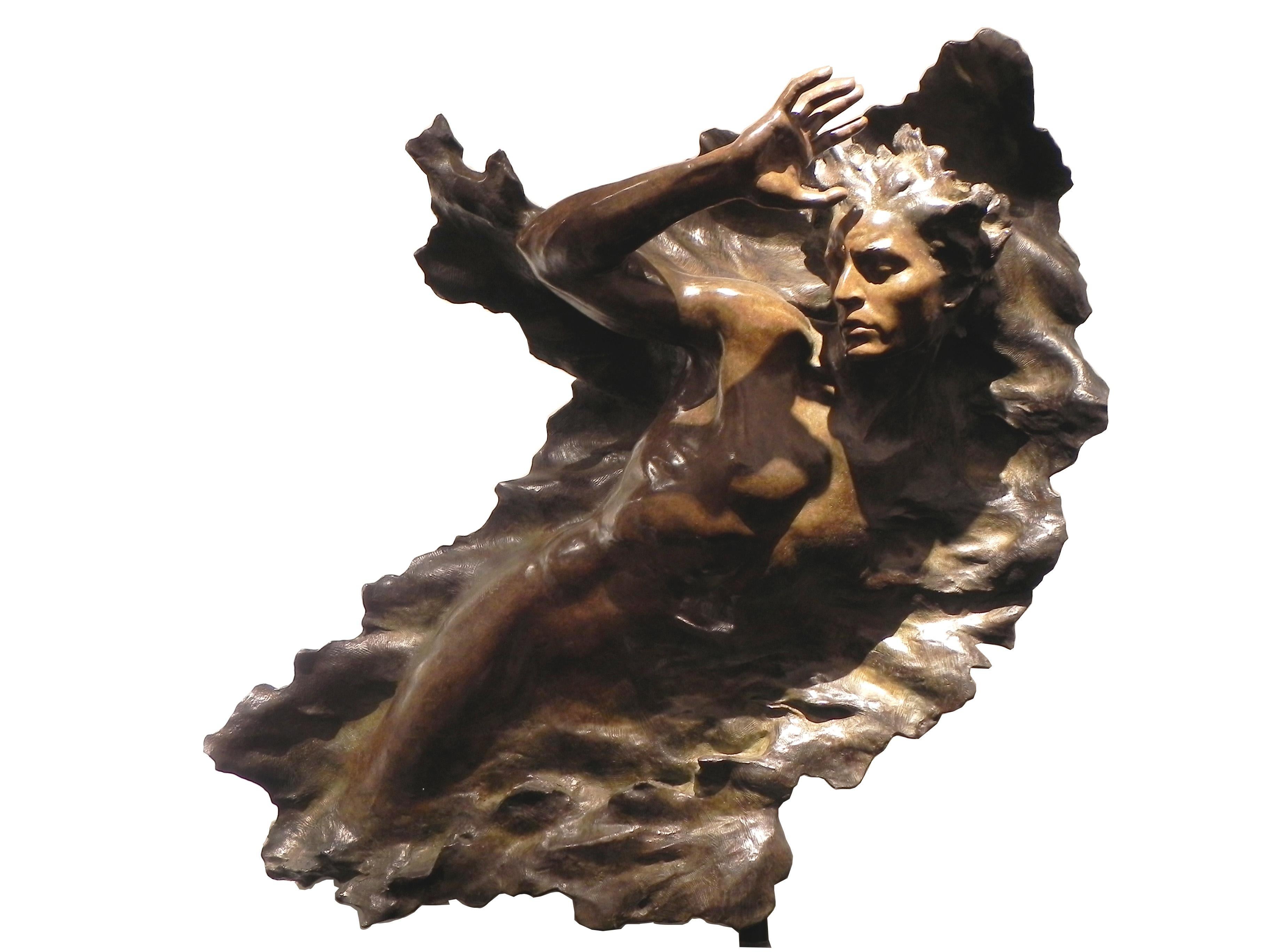Edgar DegasCertified Edgard Degas Bronze of a horse : (Horse walking at a high pace)c.1887–8
c.1887–8
About the Item
- Creator:Edgar Degas (1834-1917, French)
- Creation Year:c.1887–8
- Dimensions:Height: 9.26 in (23.5 cm)Width: 8.86 in (22.5 cm)Depth: 3.55 in (9 cm)
- Medium:
- Movement & Style:
- Period:
- Condition:
- Gallery Location:Gent, BE
- Reference Number:1stDibs: LU2140211311932
Edgar Degas
Edgar Degas, born Hilaire-Germain-Edgar De Gas in Paris in 1834, was the oldest of five children of Célestine Musson De Gas, a Creole from New Orleans, and Augustin De Gas, a banker. Degas began his schooling at age eleven, enrolling in the Lycée Louis-le-Grand, but after his mother died when he was thirteen, his father and grandfather became the main influences on him for the remainder of his youth.
Upon graduating the Lycée in 1853, at age 18, he registered as a copyist in the Louvre Museum, but his father expected him to go to law school. Degas duly enrolled at the faculty of law of the University of Paris, in November 1853, but applied little effort to his studies. In 1855, Degas met Jean-Auguste-Dominique Ingres, whose advice he never forgot: “Draw lines, young man, and still more lines, both from life and from memory, and you will become a good artist.” In April of that year, Degas was admitted to the École des Beaux-Arts.
Evidence of Degas’ classical education can be seen in his early painting, Young Spartans Exercising (ca. 1860; National Gallery, London), done while he was still in his twenties. After 1865, when the Salon accepted his history painting The Misfortunes of the City of Orléans (Musée d'Orsay, Paris), Degas did not paint Academic subjects again, focusing his attention on scenes of modern life. He began to paint scenes of such urban leisure activities as horse racing and, after about 1870, of café-concert singers and ballet dancers. Degas' interest in ballet dancers intensified in the 1870s, and eventually he produced approximately 1,500 works on the subject. These are not traditional portraits, but studies that address the movement of the human body, exploring the physicality and discipline of the dancers through the use of contorted postures and unexpected vantage points.
Following the opening of trade with Japan in 1854, many French artists, including Degas, were increasingly influenced by Japanese prints. Degas abstracted from these prints their inventive compositions and points of view, particularly in his use of cropping and asymmetry [Dancers Practicing at the Bar (1877); Dancers, Pink and Green (ca. 1890)]. He also observed how sixteenth-century Italian Mannerists similarly framed their subjects, sometimes cutting off part of a figure.
Degas had an interest in a wide range of media, including engraving, monotype, and photography. Before 1880, he generally used oils for his completed works, but after 1875, he began using pastels more frequently, even in finished works such as Portraits at the Stock Exchange (1876). He submitted a suite of nudes, all rendered in pastel, to the final Impressionist exhibition in 1886; among these was Woman Bathing in a Shallow Tub (1885). The figures in these pastels were criticized for their ungainly poses.
By the late 1880s, Degas’s eyesight had begun to fail, perhaps as a result of an injury suffered during his service in defending Paris during the Franco-Prussian War of 1870–71. After that time he focused almost exclusively on dancers and nudes, increasingly turning to sculpture. Degas continued working as late as 1912, when he was forced to leave the studio in Montmartre in which he had labored for more than twenty years. He died five years later in 1917, at the age of eighty-three.
Find original Edgar Degas drawings, prints, paintings and other art on 1stDibs.
(Biography provided by Stern Pissarro Gallery)
- ShippingRetrieving quote...Ships From: Gent, Belgium
- Return PolicyA return for this item may be initiated within 10 days of delivery.
- Edgard Degas: Horse Clearing an Obstacle (work 48 /certified by Comité Degas)By Edgar DegasLocated in Gent, VOVHorse Clearing an Obstacle (work number 48) Bronze with dark brown green patina bearing the stamp of the signature "Degas", Numbered IV/IX and dated 1998 Posthumous lost wax casting as of 1998. Stamp of Valsuani. Signed Degas The work is a sought-after rarity in terms of Degas’ sculptures. This bronze is distinguished by the fact that it is a Valsuani bronze, meaning it faithfully records Degas’ wax version’s as it appeared at the time of its creation. Most Degas' bronzes that are found on the market were cast by Hébrard – these serialized bronzes are surmoulages, or “aftercasts,” that were cast from the modèle bronzes currently in the Norton Simon Museum (Pasadena). Because these Hebrard bronzes...Category
1880s Impressionist Figurative Sculptures
MaterialsBronze
- Carpeaux etnic bronze : Le chinois (1868). N1 (scetch) Observatory fountainLocated in Gent, VOVJEAN-BAPTISTE CARPEAUX 1827 - 1875 Le Chinois N°1 (study for Asia) (1868). Model from the observatory fountain. Sketch Height ca.60 cm A similar copy auctioned on June 22, 2023, at ...Category
1860s Realist Figurative Sculptures
MaterialsBronze
- Italian Animal Bronze : Battling Rams by Sirio TofanariLocated in Gent, VOVA very rare bronze cast of two battling Rams, by Sirio Tofanari (1886-1969). An old cast with a dark brown shaded patina. On a heavy green marble steppe...Category
1930s Art Deco Figurative Sculptures
MaterialsMarble, Bronze
- Animal Bronze: Lying eagle by Alberic Collin (close friend of Rembrandt Bugatti)Located in Gent, VOVNumbered 1/8 Cast Fonderie Rocher A fine cast with a vivid green patina of a bird of preyCategory
1930s Nude Sculptures
MaterialsBronze
- Young Antelope by Sirio TofanariLocated in Gent, VOVA fine bronze cast of a young antelope or male deer licking its back, by Sirio Tofanari (1886-1969). An old model with degraded dark-brown patina and lighter brown tones. Signed Siri...Category
20th Century Figurative Sculptures
MaterialsBronze
- Roaring LionnessLocated in Gent, VOVA fine quality, twentieth-century bronze model of a roaring lioness by Alberic Collin (Belgian 1886-1962). Prior to casting by the Valsuani foundry it w...Category
1930s Art Deco Figurative Sculptures
MaterialsBronze
- Bronze Sculpture "Mother and Child" Baboons by Blanca WillLocated in Rochester, NY"Mother and Child" an impressionist bronze sculpture of baboons by sculptor Blanca Will, American, 1881-1978, dated 1912. Works by Will are rare. Blanca Will Exhibited at the National Academy of Design, Pennsylvania Academy of Fine Arts...Category
Early 20th Century Impressionist Figurative Sculptures
MaterialsBronze
- Jockey Pipe Rack in Bronze A Bronze by Charles RumseyBy Charles Cary RumseyLocated in Brookville, NYCharles Rumsey was a child prodigy sent to Paris to train in sculpting at age 12. He was not only a prodigy sculptor but an avid horseman and sportsman...Category
1910s American Impressionist Figurative Sculptures
MaterialsBronze
- Place of RefugeBy Siro'Located in Kailua Kona, HIThe Place of Refuge on the Big Island of Hawaii is a sacred place for Hawaiians. It signifies rebirth and health. During one of my visits to this heritage sight, I was inspired to fe...Category
2010s Impressionist Figurative Sculptures
MaterialsBronze
- “Ane d’Afrique” African Donkey bronze by Auguste Cain, Susse foundryBy Auguste CainLocated in PARIS, FRCharming little bronze by the great animal sculptor Auguste-Nicolas Cain, signed A.Cain on the side, inscribed Ane d’Afrique (Donkey from Africa) and Susse Fres on the terrace. The...Category
1870s Impressionist Figurative Sculptures
MaterialsBronze
- "Ex Nihilo Fragment 2", Frederick Hart, Bronze Sculpture, Woman FigureBy Frederick HartLocated in Dallas, TXEx Nihilo Fragment 2 is a detail from the full scale plaster from the final stone sculpture of Ex Nihilo, commissioned as part of the The Creation Sculptures...Category
Early 2000s American Impressionist Figurative Sculptures
MaterialsBronze
- "Ex Nihilo Figure 3", Frederick Hart, Bronze Sculpture, Figurative ManBy Frederick HartLocated in Dallas, TXEx Nihilo Figure 3 is a full scale plaster from the final stone sculpture of Ex Nihilo, commissioned as part of the The Creation Sculptures at Washington National Cathedral...Category
Early 2000s American Impressionist Figurative Sculptures
MaterialsBronze
